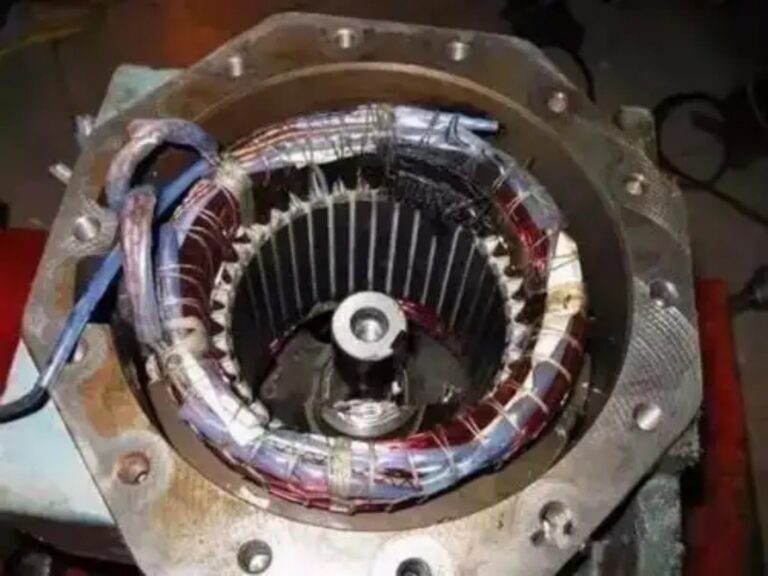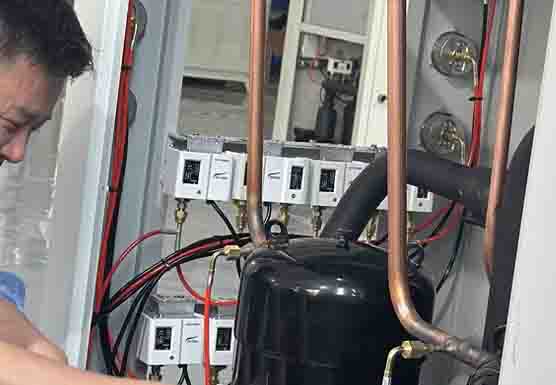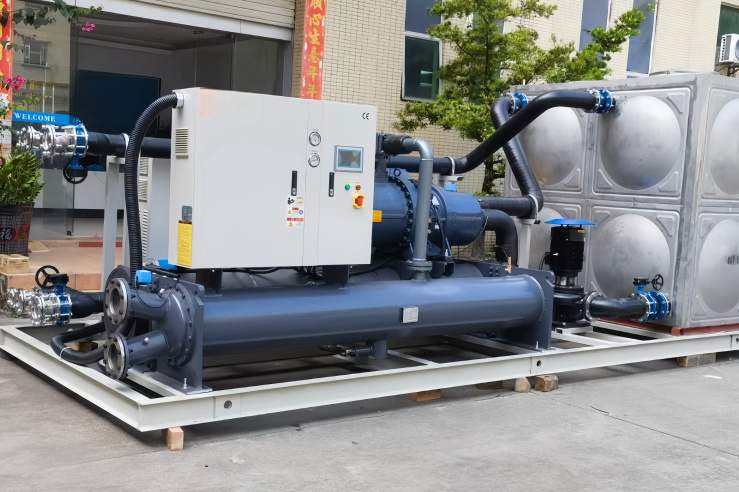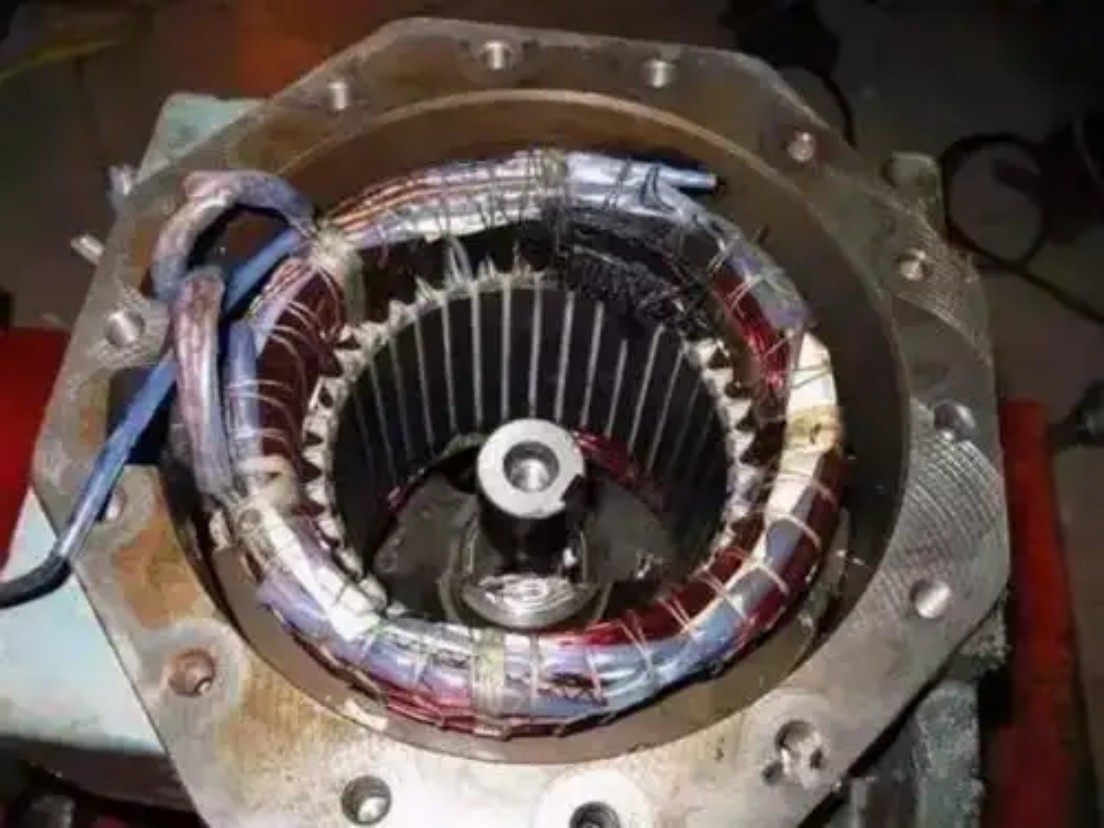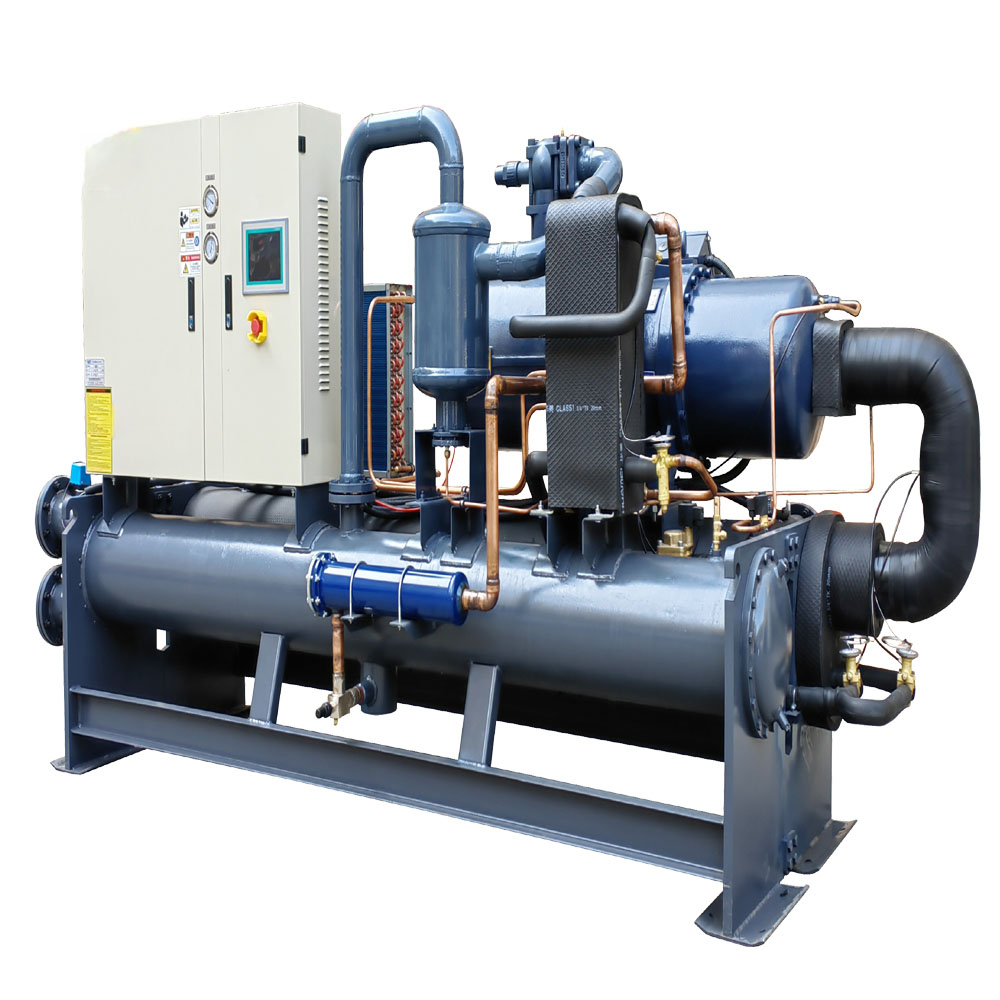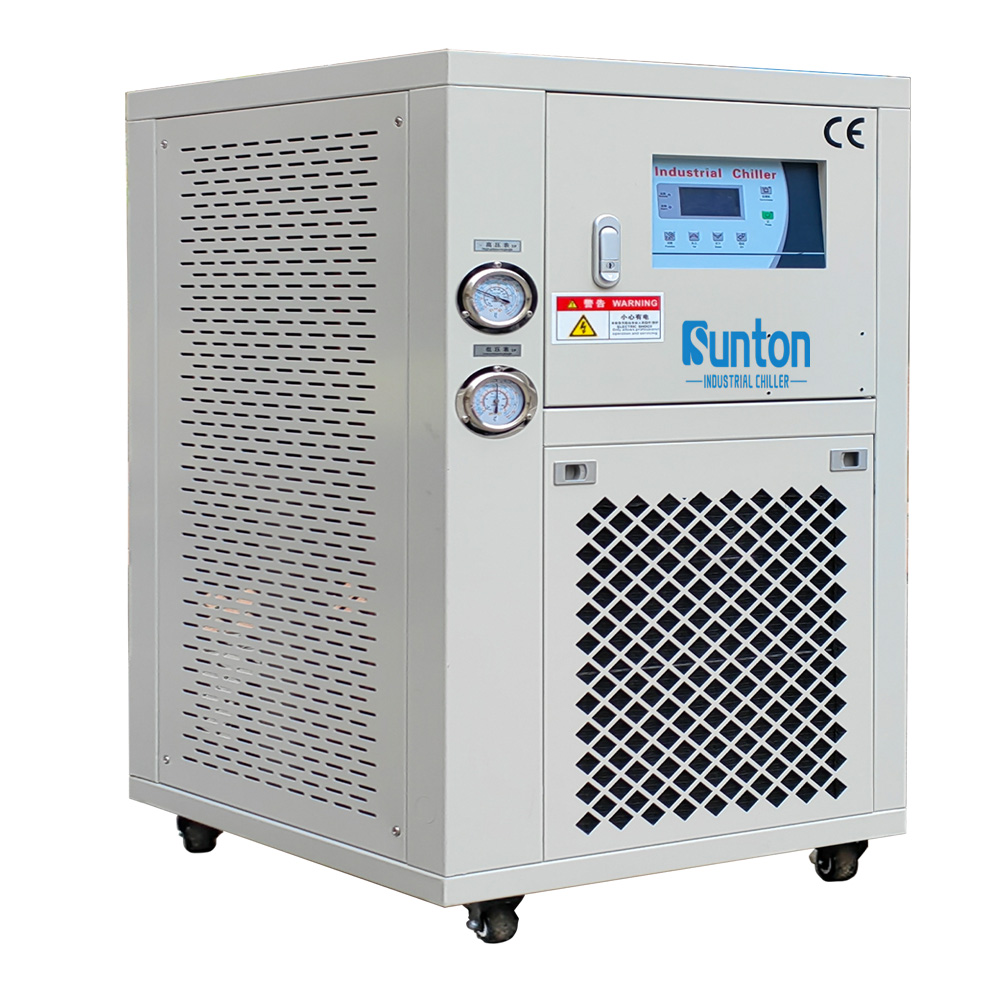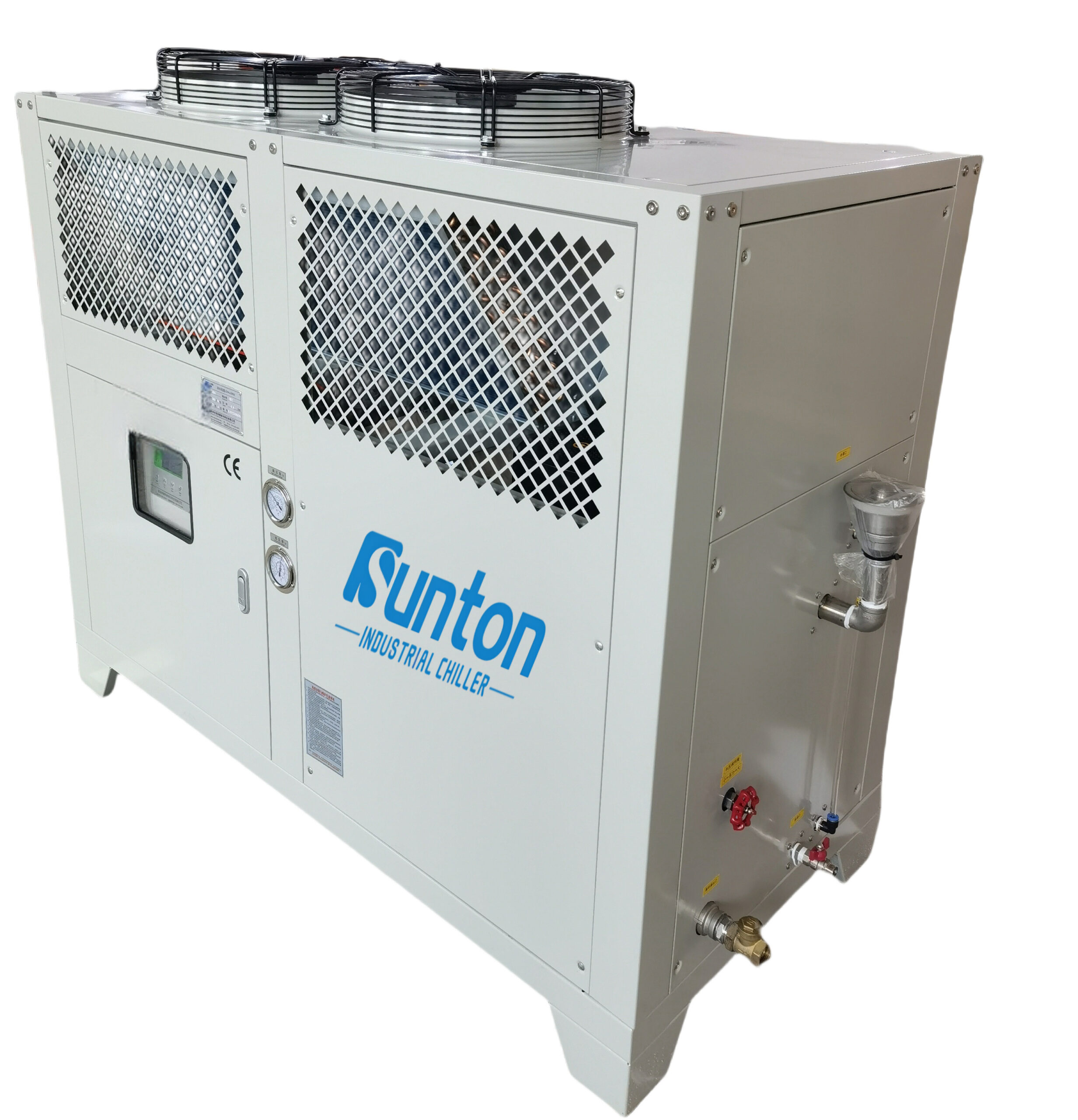-
Dalingshan Industrial Guangdong
Menguasai Kontrol Suhu Fermentasi Pabrik Pembuatan Bir untuk Keberhasilan Pembuatan Bir
Menguasai Kontrol Suhu Pabrik Pembuatan Bir Fermentasi
Bahasa Indonesia: Di dunia pembuatan bir, mencapai minuman yang sempurna bergantung pada Fermentasi yang tepat adalah proses penting dalam kualitas pembuatan bir Bir dapat diseduh di rumah menggunakan fermenter kerucut untuk fermentasi yang lebih baik.. kontrol suhu. Apakah Anda seorang pembuat bir berpengalaman atau pembuat bir rumahan yang bersemangat, mempertahankan Fermentasi optimal dalam fermenter kerucut memungkinkan manajemen ragi yang lebih mudah. suhu sangat penting untuk kualitas dan rasa yang konsisten dalam bir atau anggur Anda. Artikel ini menyelidiki seluk-beluk kontrol suhu fermentasi, mengeksplorasi berbagai metode, dari pengontrol suhu digital dasar hingga glikol canggih Pendingin dapat membantu mempertahankan suhu fermentasi yang terkendali untuk bir Anda, dan menawarkan wawasan tentang cara memilih sistem yang tepat untuk pengaturan pembuatan bir Anda. Dengan peralatan kontrol suhu yang tepat, Anda dapat dengan percaya diri mengendalikan suhu fermentasi Anda dan meningkatkan minuman Anda ke tingkat berikutnya.
Daftar Isi
- Mengapa Kontrol Suhu Fermentasi Begitu Penting?
- Kontrol Suhu Dasar: Memanfaatkan Pengontrol Suhu Digital
- Kontrol Suhu Canggih: Kekuatan Pendingin Glikol
- Memilih Pengontrol Suhu yang Tepat untuk Kebutuhan Anda
- Memahami Pengontrol Suhu Dua Tahap
- Ruang Fermentasi: Menciptakan Lingkungan Ideal
- Pemantauan Suhu Fermentasi: Alat dan Teknik
- Mengoptimalkan Kontrol Suhu untuk Berbagai Jenis Bir
- Pemecahan Masalah Suhu Fermentasi
- Masa Depan Kontrol Suhu Fermentasi
Mengapa Pengendalian Suhu Pabrik Fermentasi Begitu Penting?
Suhu fermentasi Ragi memainkan peran penting dalam membentuk karakter bir hasil seduhan Anda. Ragi, mikroorganisme yang bertanggung jawab atas fermentasi, sangat sensitif terhadap fluktuasi suhu. Mempertahankan suhu yang tepat selama proses fermentasi sangat penting karena beberapa alasan:
- Profil Rasa: Ragi menghasilkan senyawa rasa yang berbeda pada suhu yang berbeda. Beberapa galur ragi menghasilkan ester buah yang diinginkan pada suhu yang lebih tinggi, sementara yang lain menghasilkan rasa yang lebih bersih dan lebih renyah pada suhu yang lebih rendah. Menyimpang dari kisaran suhu optimal dapat menghasilkan rasa yang tidak enak, seperti ester yang tidak diinginkan, alkohol fusel (yang rasanya keras dan seperti pelarut), atau senyawa sulfur yang berlebihan.
- Tingkat Fermentasi: Aktivitas ragi secara langsung dipengaruhi oleh suhu, oleh karena itu menjaga suhu fermentasi yang terkendali sangatlah penting. Suhu yang lebih tinggi mempercepat fermentasi, sedangkan suhu yang lebih rendah memperlambatnya. Menjaga suhu yang konsisten memastikan fermentasi yang dapat diprediksi dan terkendali, mencegah fermentasi yang macet atau tidak terkendali.
- Redaman: Atenuasi mengacu pada tingkat di mana ragi mengubah gula menjadi alkohol dan karbon dioksida. Suhu fermentasi memengaruhi atenuasi, yang memengaruhi kandungan alkohol akhir dan kekentalan bir.
- Kesehatan Ragi: Suhu ekstrem dapat membuat ragi stres atau bahkan mati, sehingga mengakibatkan fermentasi tidak tuntas atau timbul rasa tidak enak.
Kontrol Suhu Dasar: Memanfaatkan Pengontrol Suhu Digital
Bagi banyak pembuat bir rumahan, pengontrol suhu digital menawarkan cara yang sederhana dan efektif untuk mengendalikan suhu fermentasi mereka. Perangkat ini bekerja dengan menyalakan dan mematikan elemen pemanas atau pendingin untuk mempertahankan suhu yang ditetapkan. Jika Anda memerlukan cara untuk mengatur suhu fermentasi minuman Anda secara tepat, pengontrol suhu digital menyediakan solusi yang terjangkau dan mudah diakses.
Berikut cara kerjanya secara umum:
- Probe Suhu: Sebuah probe suhu ditempatkan di dalam ruang fermentasi sangat penting untuk menjaga fermentasi Anda pada suhu yang tepat. atau langsung ke dalam bir yang difermentasi pada suhu yang tepat adalah kunci untuk menghasilkan bir berkualitas. Probe memantau suhu aktual.
- Unit Pengontrol: Probe terhubung ke unit pengontrol, yang menampilkan suhu saat ini dan memungkinkan Anda mengatur suhu yang diinginkan.
- Elemen Pemanas/Pendingin: Pengontrol dihubungkan ke elemen pemanas (seperti bantalan pemanas atau sabuk) dan/atau elemen pendingin (seperti lemari es atau freezer).
- Sistem Relai: Pengontrol menggunakan sistem relai untuk menghidupkan atau mematikan elemen pemanas atau pendingin berdasarkan perbedaan antara suhu aktual dan suhu yang ditetapkan.
Pengontrol suhu digital memberikan peningkatan signifikan dibandingkan metode manual, yang memungkinkan pembuat bir rumahan mempertahankan suhu fermentasi yang lebih konsisten. Pendingin Air Sekrup Berpendingin Air menawarkan pilihan untuk kebutuhan pendinginan yang lebih kuat.
Kontrol Suhu Canggih: Kekuatan Pendingin Glikol
Untuk pembuat bir yang lebih ahli, terutama yang beroperasi dalam skala yang lebih besar atau mencari tingkat kontrol suhu tertinggi, pendingin glikol menawarkan solusi yang lebih unggul. Pendingin glikol adalah sistem pendinginan yang menggunakan larutan antibeku food grade, biasanya propilen glikol, untuk mendinginkan fermentor Anda. Lihat Pendingin glikol untuk berbagai pilihan.
Berikut ini alasan mengapa pendingin glikol disukai oleh banyak pembuat bir rumahan profesional dan serius:
- Kontrol Suhu yang Tepat: Pendingin glikol dapat mempertahankan suhu yang sangat tepat, sering kali dalam sepersekian derajat, untuk memastikan kondisi fermentasi yang optimal. Hal ini terutama penting untuk jenis bir seperti bir lager, yang memerlukan suhu fermentasi yang sangat spesifik dan konsisten.
- Pendinginan Cepat: Pendingin glikol dapat dengan cepat mendinginkan wort Anda setelah mendidih atau menyesuaikan suhu fermentasi jika diperlukan.
- Fleksibilitas: Glikol dapat digunakan untuk mendinginkan fermentor pada suhu yang berbeda secara bersamaan, sehingga ideal untuk pabrik bir dengan jadwal produksi yang beragam. Glikol dapat mendinginkan minuman Anda hingga mendekati titik beku.
- Kemampuan Pemanasan: Beberapa pendingin glikol juga dapat digunakan untuk pemanasan, menyediakan kontrol suhu lengkap pada seluruh proses pembuatan bir.
Memilih Pengontrol Suhu yang Tepat untuk Kebutuhan Anda
Pilihan antara pengontrol suhu digital dan pendingin glikol bergantung pada beberapa faktor:
- Skala Operasi: Untuk pembuatan bir rumahan dalam jumlah kecil, pengontrol suhu digital mungkin sudah cukup. Untuk pembuatan bir dalam jumlah besar atau operasi komersial, pendingin glikol sering kali diperlukan.
- Anggaran: Pengontrol suhu digital umumnya lebih terjangkau daripada pendingin glikol.
- Tingkat Kontrol: Jika Anda memerlukan kontrol suhu yang sangat tepat, terutama untuk jenis bir seperti bir lager, pendingin glikol merupakan pilihan yang lebih baik.
- Ruang angkasa: Pendingin glikol membutuhkan lebih banyak ruang daripada pengontrol suhu digital.
- Keserbagunaan: Jika Anda perlu mendinginkan beberapa fermenter pada suhu yang berbeda atau memerlukan kemampuan pemanasan dan pendinginan, pendingin glikol menawarkan fleksibilitas yang lebih besar. Bagi mereka yang memiliki operasi yang lebih besar, pertimbangkan Pendingin Sentral Sekrup Berpendingin Air.
Memahami Pengontrol Suhu Dua Tahap
Pengontrol suhu dua tahap adalah jenis pengontrol suhu digital yang lebih canggih yang dapat mengontrol elemen pemanas dan pendingin secara bersamaan. Hal ini memungkinkan presisi yang lebih tinggi dalam mempertahankan suhu yang diinginkan. Baik untuk pembuat bir rumahan maupun profesional, ini adalah cara yang bagus untuk mengontrol suhu minuman Anda.
Begini cara kerjanya:
- Dua Relai: Pengontrol dua tahap memiliki dua relai, satu untuk elemen pemanas dan satu untuk elemen pendingin.
- Titik Tetap dan Diferensial: Anda mengatur suhu yang diinginkan (titik setel) dan diferensial. Diferensial adalah variasi suhu yang diizinkan di atas dan di bawah titik setel sebelum elemen pemanas atau pendingin diaktifkan.
- Pengalihan Otomatis: Kontroler secara otomatis beralih antara mode pemanasan dan pendinginan sesuai kebutuhan untuk mempertahankan suhu dalam perbedaan yang ditetapkan.
Pengontrol suhu dua tahap sangat berguna untuk menjaga suhu fermentasi tetap stabil di lingkungan dengan suhu sekitar yang berfluktuasi. Untuk operasi yang lebih besar, kami sarankan untuk menjelajahi Pendingin Air Gulir Berpendingin Air.
Ruang Fermentasi: Menciptakan Lingkungan Ideal
Ruang fermentasi adalah penutup terisolasi yang digunakan untuk menampung fermentor Anda. Fermentor berbentuk kerucut dapat membantu menjaga fermentasi Anda tetap bersih dan menyediakan lingkungan yang stabil untuk ragi. fermentasi. Ruang fermentasi dapat berupa kotak terisolasi sederhana hingga lemari es atau freezer yang dimodifikasi. Pembuat bir rumahan sering menggunakan lemari es atau freezer yang diubah sebagai ruang fermentasi. Saat menggunakan lemari es atau freezer, Anda akan memerlukan pengontrol suhu untuk mengesampingkan termostat internal alat dan mempertahankan suhu fermentasi yang diinginkan.
Berikut ini adalah manfaat penggunaan bilik fermentasi:
- Stabilitas Suhu: Ruang fermentasi yang terisolasi dengan baik membantu melindungi minuman fermentasi dari fluktuasi suhu sekitar.
- Kontrol Cahaya: Ruang fermentasi dapat menghalangi cahaya, yang dapat memberi dampak negatif pada cita rasa bir Anda.
- Pengendalian Kontaminasi: Ruang fermentasi yang tertutup rapat membantu mencegah kontaminasi dari mikroorganisme di udara.
- Pengendalian Bau: Jika Anda melakukan fermentasi di dalam ruangan, ruang fermentasi dapat membantu menahan bau kuat yang dihasilkan selama fermentasi.
Pemantauan Suhu Fermentasi: Alat dan Teknik
Pemantauan suhu fermentasi yang akurat sangat penting untuk memastikan hasil yang optimal. Berikut ini adalah beberapa alat dan teknik umum:
- Termometer: Cara yang mudah dan terjangkau untuk membaca suhu adalah dengan termometer. Berbagai jenis tersedia, termasuk termometer tempel, termometer apung, dan termometer digital.
- Tampilan Pengontrol Suhu: Kebanyakan pengontrol suhu digital menampilkan suhu saat ini, menyediakan cara praktis untuk memantau fermentasi.
- Pencatat Data: Untuk pemantauan yang lebih canggih, pencatat data dapat merekam pembacaan suhu secara berkala, sehingga Anda dapat melacak fluktuasi suhu dari waktu ke waktu. Beberapa pembuat bir canggih akan menggunakan panel kontrol untuk memantau dan mengendalikan suhu.
Mengoptimalkan Kontrol Suhu untuk Berbagai Jenis Bir
Berbagai jenis bir memiliki kisaran suhu fermentasi optimum yang berbeda. Berikut ini beberapa panduan umum:
- Abu: Sebagian besar galur ragi bir tumbuh paling baik pada suhu 60-72°F (15-22°C). Beberapa galur, seperti ragi bir Belgia, dapat mentoleransi suhu fermentasi bir yang lebih tinggi.
- Bir: Strain ragi bir lebih menyukai suhu yang lebih dingin, biasanya antara 45-55°F (7-13°C).
- Gaya Hibrida: Beberapa jenis bir, seperti bir umum California, difermentasi dengan ragi bir pada suhu yang lebih hangat.
Sangat penting untuk meneliti jenis ragi tertentu yang Anda gunakan dan mengikuti kisaran suhu fermentasi yang direkomendasikan untuk jenis ragi tersebut.
Pemecahan Masalah Suhu Fermentasi
Bahkan dengan peralatan terbaik, Anda mungkin mengalami masalah suhu fermentasi. Berikut ini beberapa masalah umum dan solusinya dalam fermentasi homebrew:
- Fermentasi macet: Jika fermentasi berhenti sebelum waktunya, bisa jadi karena suhunya terlalu rendah. Cobalah untuk memanaskan fermenter dengan lembut ke kisaran suhu yang sesuai.
- Fermentasi yang tak terkendali: Jika fermentasi Anda terlalu kuat, hal itu mungkin disebabkan oleh suhu yang terlalu tinggi. Cobalah mendinginkan fermenter hingga ke kisaran yang sesuai. Jika Anda mengalami kesulitan mempertahankan suhu fermentasi yang stabil, pendingin glikol dapat membantu.
- Rasa yang Tidak Enak: Rasa yang tidak enak dapat disebabkan oleh berbagai faktor, termasuk suhu fermentasi yang tidak tepat. Jika Anda menduga suhu adalah penyebabnya, tinjau kembali metode pengendalian suhu dan lakukan penyesuaian seperlunya.
Masa Depan Kontrol Suhu Fermentasi
Bidang pengendalian suhu fermentasi terus berkembang. Berikut beberapa tren yang perlu diperhatikan:
- Pengendali Cerdas: Harapkan untuk melihat pengontrol suhu yang lebih canggih dengan konektivitas Wi-Fi, yang memungkinkan pemantauan dan kontrol jarak jauh melalui telepon pintar atau perangkat lain.
- Integrasi dengan Perangkat Lunak Pembuatan Bir: Sistem kendali suhu dapat semakin terintegrasi dengan perangkat lunak penyeduhan, yang memungkinkan penyesuaian suhu otomatis berdasarkan parameter resep dan data waktu nyata.
- Teknologi Pendinginan Canggih: Inovasi dalam teknologi pendinginan, seperti pendinginan termoelektrik, dapat menawarkan kemungkinan baru untuk kontrol suhu fermentasi yang tepat dan hemat energi.
Pertanyaan Umum
Berapa suhu fermentasi ideal untuk sebagian besar bir?
Sebagian besar galur ragi bir bekerja paling baik pada suhu 60-72°F (15-22°C). Akan tetapi, penting untuk memeriksa rekomendasi khusus untuk galur ragi yang Anda gunakan.
Bagaimana saya bisa mendinginkan fermentor saya jika terlalu hangat?
Anda dapat mencoba memindahkan fermentor ke lokasi yang lebih dingin, menaruhnya dalam bak air, atau menggunakan elemen pendingin seperti botol air beku atau pendingin glikol.
Dapatkah saya menggunakan lemari es biasa untuk mengontrol suhu fermentasi?
Dapatkah saya menggunakan lemari es biasa untuk mengontrol suhu fermentasi? Ya, lemari es biasa dapat digunakan sebagai ruang fermentasi, tetapi Anda memerlukan pengontrol suhu untuk mengesampingkan termostat internal lemari es dan mempertahankan suhu yang tepat.
Apa keuntungan menggunakan pengontrol suhu dua tahap?
Pengontrol suhu dua tahap dapat mengontrol elemen pemanas dan pendingin, yang memungkinkan pengendalian suhu lebih tepat dan peralihan otomatis antara mode pemanasan dan pendinginan.
Bagaimana cara kerja pendingin glikol?
Pendingin glikol menggunakan sistem pendinginan untuk mendinginkan campuran air dan glikol, yang kemudian dialirkan melalui penukar panas atau jaket di sekitar fermentor untuk mempertahankan suhu yang diinginkan.
Apakah saya memerlukan pendingin glikol untuk pembuatan bir rumahan?
Meskipun tidak sepenuhnya diperlukan bagi semua pembuat bir rumahan, pendingin glikol menawarkan keuntungan signifikan bagi mereka yang mencari kendali suhu presisi, khususnya untuk bir ringan atau bir dalam jumlah besar.
Kesimpulan
- Suhu adalah Kuncinya: Menjaga suhu fermentasi yang benar sangat penting untuk menghasilkan bir berkualitas tinggi.
- Pilih Alat yang Tepat: Pilih sistem kontrol suhu yang sesuai dengan kebutuhan dan anggaran Anda, baik itu pengontrol suhu digital sederhana atau pendingin glikol canggih. Jika Anda membutuhkan pendingin, jelajahi Pendingin Sekrup Berpendingin Udara pilihan.
- Pantau dan Sesuaikan: Pantau suhu fermentasi secara teratur dan buat penyesuaian seperlunya untuk menjaganya dalam kisaran optimal.
- Pertimbangkan Ruang Fermentasi: Ruang fermentasi dapat membantu menstabilkan suhu dan melindungi minuman Anda dari faktor eksternal.
- Bereksperimen dan Belajar: Jangan takut bereksperimen dengan suhu fermentasi yang berbeda untuk melihat bagaimana pengaruhnya terhadap rasa bir Anda.
Dengan menguasai kontrol suhu fermentasi, Anda dapat meningkatkan proses pembuatan bir Anda ke tingkat berikutnya, menghasilkan bir yang konsisten, beraroma, dan berkualitas tinggi yang akan Anda banggakan. Untuk semua kebutuhan pendinginan tempat pembuatan bir Anda, pertimbangkan para ahli. Hubungi kami hari ini!

